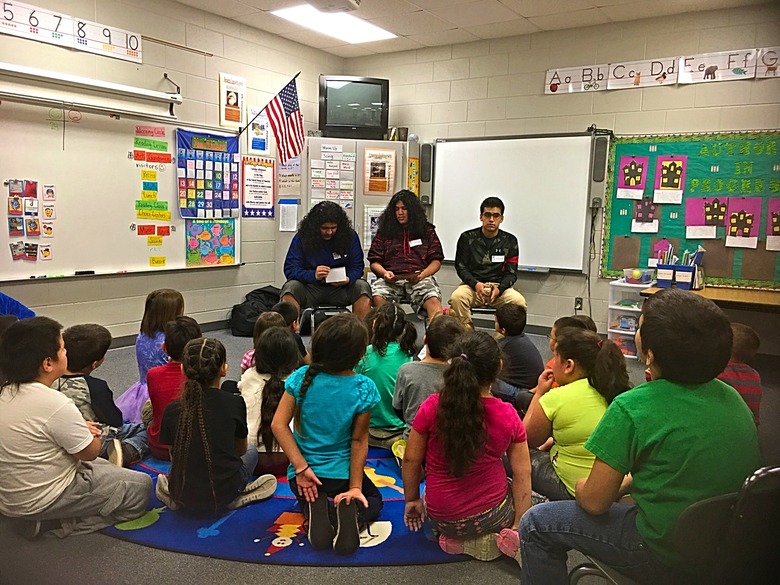- Author:
- Martha Handrick
- Subject:
- Character Education, Early Learning, English Language Arts, Literature, Reading Literature, Speaking and Listening, World Languages
- Material Type:
- Lesson Plan
- Level:
- High School
- Grade:
- 11, 12
- Tags:
- License:
- Creative Commons Attribution Non-Commercial
- Language:
- English
- Media Formats:
- Downloadable docs, Graphics/Photos, Text/HTML, Video
Education Standards
Native American Cultural Children's Stories Project Assignment
Native American Cultural Children's Stories: Reading Against the Grain
Native American Cultural Children's Stories: Rubric/Evaluation
Native American Cultural Children's Stories: Student Exemplar 1
Native American Cultural Children's Stories: Student Exemplar 2
Native American Cultural Children's Stories

Overview
The cultural children's story project allows students to explore Native American culture through a new lens by authoring and illustrating children's stories that teach children between the ages of four and six a lesson or tale unique to Native cultural traditions. The exemplar stories are laminated, bound, and given as gifts to an area elementary school with a primarily Native student body. Student authors read the stories to the children, and the books become part of the children's classroom library. The children learn cultural traditions from a young age and see their mentors (often Native students as well) as role models and writers. The authors learn the skills to develop their stories from conception to publication to presentation.
Introducing the assignment
I use this lesson in a junior/senior elective class titled Native American Literature. This class has historically been about 90% Native American students, primarily Ojibwe. When I assign the story, students have finished reading Mary Crow Dog's autobiography Lakota Woman, which highlights the importance of children being brought up in the culture from a very young age. This assignment is a natural follow-up for the themes related in her life story of yearning for cultural identity.
I introduce the assignment with the use of the attached handouts on reading against the grain and striving for authenticity and accuracy.
I then show students several exemplars (2 attached) that help them see what other students have done with the project.
Next we discuss the rubric/evaluation sheet to assure that they understand how they will be evaluated.
Finally, quality stories are bound and laminated, taken to the local grade school, read to the students, and gifted to the school's library.
Please see attached video for more information.
All resources are in the Resource Library tab.
Students: Please look at the attached assignment sheet, reading against the grain handout, tips on how to assure accuracy and authenticity, and the rubric/evaluation sheet that shows how you will be scored.
Then please look at the 2 attached student model stories to get a feel for how the stories can be developed.
Please see attached video for more information.
All resources are in the Resource Library tab.